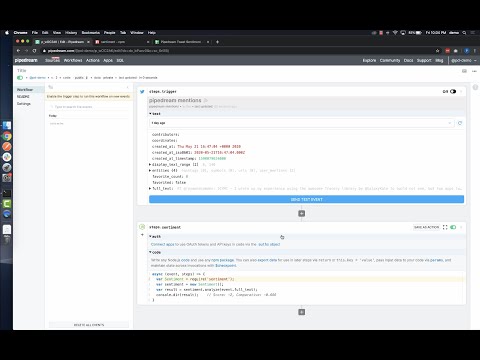What do you want to automate
with BugBug and Google Sheets?
Prompt, edit and deploy AI agents that connect to BugBug, Google Sheets and 3,000+ other apps in seconds.
Trusted by 1,000,000+ developers from startups to Fortune 500 companies
Popular Ways to Connect BugBug with Google Sheets#
Popular BugBug and Google Sheets Triggers#
Popular BugBug and Google Sheets Actions#
Add a single row of data to Google Sheets. Optionally insert the row at a specific index (e.g., row 2 to insert after headers, shifting existing data down). See the documentation
Add multiple rows of data to a Google Sheet. See the documentation
Get all values or values from a range of cells using A1 notation. See the documentation
Create conditional formatting with color scales or custom formulas. See the documentation
Add edit protection to cell range with permissions. See the documentation
Overview of BugBug#
The BugBug API lets you automate and integrate your browser testing workflows. With it, you can manage tests, run them programmatically, and receive test results. By connecting the BugBug API with Pipedream, you can craft serverless workflows that trigger on various events, enabling a seamless CI/CD integration, or alerting you when your automated tests detect issues.
Connect BugBug#
import { axios } from "@pipedream/platform"
export default defineComponent({
props: {
bugbug: {
type: "app",
app: "bugbug",
}
},
async run({steps, $}) {
return await axios($, {
url: `https://app.bugbug.io/api/v1/profiles/`,
headers: {
"Authorization": `Token ${this.bugbug.$auth.api_key}`,
},
})
},
})
Overview of Google Sheets#
The Google Sheets API allows for the creation, reading, updating, and deletion of data within Google Sheets, enabling a robust platform for spreadsheet management and data manipulation. Through Pipedream, you can craft serverless workflows that respond to various triggers, such as webhook events, emails, or scheduled times, to interact with Google Sheets. This synergy can automate reporting, synchronize data across applications, manage inventory, track leads in a CRM, or even conduct survey analysis by updating and retrieving sheet data on the fly.
Connect Google Sheets#
import { axios } from "@pipedream/platform"
export default defineComponent({
props: {
google_sheets: {
type: "app",
app: "google_sheets",
}
},
async run({steps, $}) {
return await axios($, {
url: `https://www.googleapis.com/oauth2/v1/userinfo`,
headers: {
Authorization: `Bearer ${this.google_sheets.$auth.oauth_access_token}`,
},
})
},
})
Related Videos#



Community Posts#


